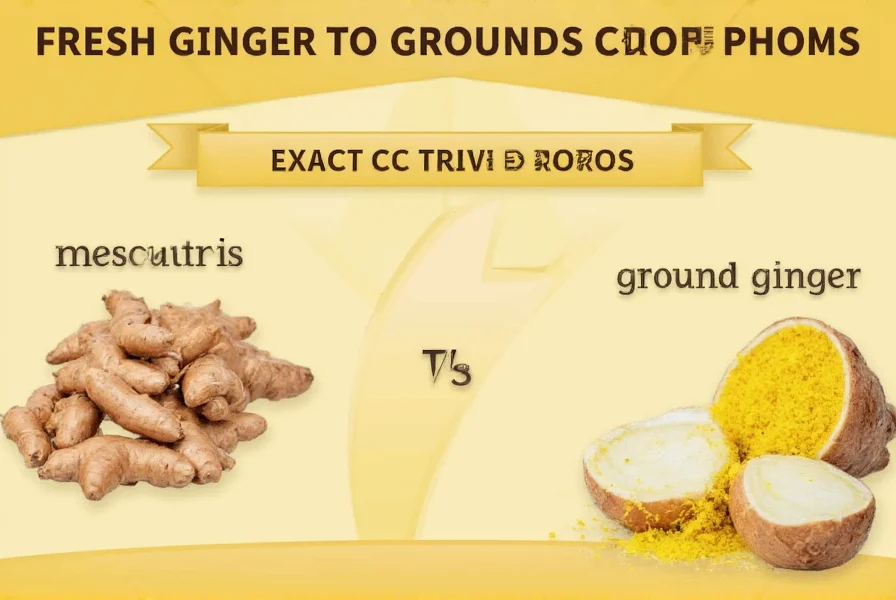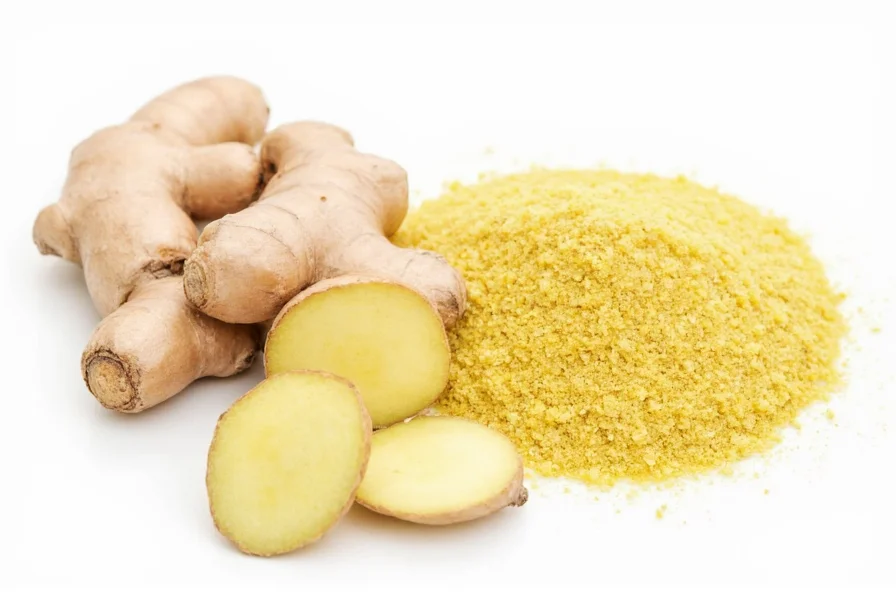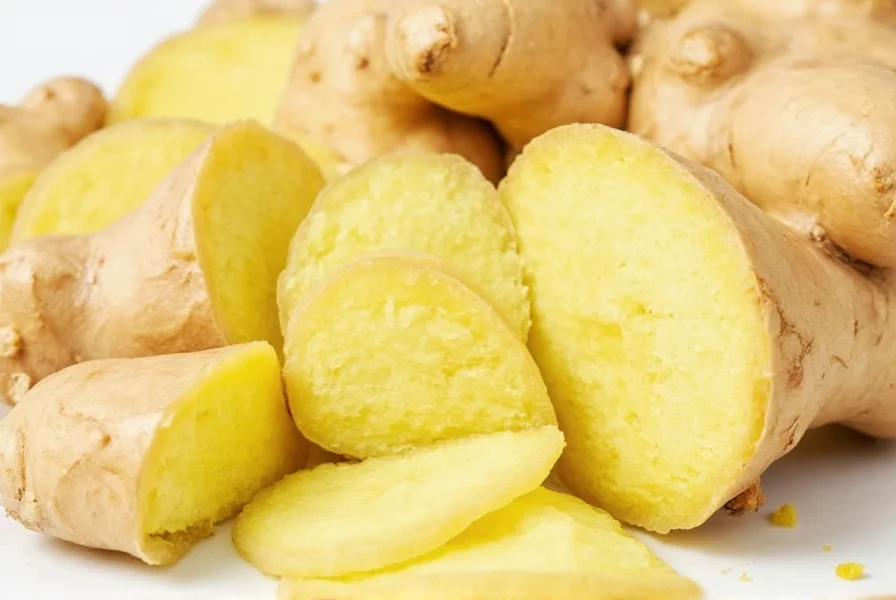1 tablespoon of fresh grated ginger equals 1/4 teaspoon of ground ginger. This 4:1 ratio (fresh to ground) is the standard conversion for most recipes, though adjustments may be needed based on recipe type and personal taste preferences.
Converting between fresh and ground ginger is a common kitchen challenge that can make or break your recipe. Whether you're mid-recipe and realize you're out of one form, or planning your grocery list for an upcoming cooking project, understanding the precise conversion ratio ensures your dishes maintain the intended flavor profile. This guide provides accurate measurements, practical substitution tips, and explains when these conversions work best in different culinary applications.
Understanding Ginger Forms and Flavor Profiles
Fresh ginger and ground ginger differ significantly in both flavor intensity and chemical composition. Fresh ginger contains gingerol, which provides a bright, spicy, and slightly citrusy flavor with noticeable heat. When ginger is dried and ground, gingerol converts to zingerone and shogaol, resulting in a more concentrated, earthy, and slightly sweeter flavor profile with less pronounced heat.
These chemical differences explain why a direct 1:1 substitution doesn't work. The drying process concentrates the flavor compounds while removing water content, making ground ginger significantly more potent by volume than its fresh counterpart.
Precise Fresh Ginger to Ground Ginger Conversion Chart
| Fresh Ginger | Ground Ginger Equivalent | Best For |
|---|---|---|
| 1 inch piece (about 1 tablespoon grated) | 1/4 teaspoon | Most savory dishes, marinades |
| 2 inches (about 2 tablespoons grated) | 1/2 teaspoon | Stir-fries, curries |
| 3 inches (about 3 tablespoons grated) | 3/4 teaspoon | Baking, chai, gingerbread |
| 1/4 cup grated | 1 teaspoon | Strong-flavored recipes, preserves |
This conversion chart for fresh ginger to ground ginger provides the foundation for successful substitutions in your cooking. Remember that these ratios serve as starting points—you may need to adjust based on your specific recipe and personal taste preferences.
When Substitutions Work Best (and When They Don't)
Not all recipes tolerate ginger substitutions equally. Understanding where fresh ginger convert to ground ginger works seamlessly versus where it might compromise your dish is crucial for culinary success.
Best for substitution:
- Baked goods (gingerbread, cookies, cakes)
- Spice blends and rubs
- Teas and warm beverages
- Long-simmered sauces and stews
Use caution with substitution:
- Fresh salsas and salads (texture matters)
- Quick-cooking stir-fries (fresh provides brighter flavor)
- Raw preparations like ginger shots
- Dishes where ginger is the star ingredient
For recipes requiring fresh ginger's distinctive fibrous texture or bright, immediate heat, consider adding a small amount of lemon or lime zest when using ground ginger to approximate that fresh quality.

Practical Tips for Successful Ginger Conversion
When substituting fresh ginger for ground ginger or vice versa, these professional kitchen techniques will help you achieve optimal results:
- Taste as you go: Add ground ginger gradually, especially in delicate recipes, as it's easier to add more than correct an overly spiced dish
- Consider freshness: Older ground ginger loses potency—if your spice is more than 6 months old, you may need slightly more
- Adjust for cooking time: In long-cooked dishes, reduce ground ginger by 10-15% as flavors concentrate during cooking
- Boost freshness: When using ground ginger in place of fresh, add a squeeze of citrus to mimic fresh ginger's bright notes
- For baking: Increase ground ginger by 10% in sweet recipes as sugar can mute spice flavors
Professional chefs often keep both forms on hand for maximum flexibility. When converting fresh ginger to ground ginger measurements for meal prep, consider making a small batch of homemade ginger powder from excess fresh ginger—it retains more volatile oils than commercial products.

Special Considerations for Different Cuisine Types
The ideal fresh ginger to ground ginger ratio varies slightly across culinary traditions. Understanding these nuances helps maintain authentic flavors:
- Asian cuisine: Traditional recipes often specify fresh ginger for its bright, sharp quality. When substituting, use 20% less ground ginger than the conversion chart suggests to avoid overpowering delicate flavors
- Indian cuisine: Many spice blends (like garam masala) already contain ground ginger. When converting recipes calling for fresh, reduce additional ground ginger by 15%
- Baking: Ground ginger works better in most baked goods, but increase liquid content by 1-2 teaspoons per teaspoon of ground ginger to compensate for lack of moisture
- Preserves: For ginger marmalade or crystallized ginger, fresh is irreplaceable—don't attempt conversion for these specialty preparations
When working with international recipes, research whether the dish traditionally uses fresh or dried ginger in its country of origin. This cultural context often determines whether substitution will succeed.
Frequently Asked Questions
Can I use ground ginger instead of fresh in tea?
Yes, use 1/8 teaspoon ground ginger per cup of tea as a starting point. Fresh ginger typically requires 1/2 inch sliced or grated. Ground ginger produces a smoother, more uniform flavor in tea, while fresh provides brighter, more complex notes. Adjust to taste after steeping for 5 minutes.
Why does my recipe taste different after substituting ground for fresh ginger?
The flavor compounds differ significantly between fresh and ground ginger. Fresh contains more gingerol (bright, sharp heat), while ground contains more shogaol (warmer, earthier notes). This chemical difference means even perfect measurements won't taste identical. Add a squeeze of citrus when using ground ginger to approximate fresh ginger's brightness.
How do I convert a recipe that calls for ginger paste?
Ginger paste typically contains about 25% water. For fresh ginger paste to ground ginger conversion: 1 tablespoon ginger paste equals approximately 3/4 teaspoon ground ginger. For recipes requiring ginger-garlic paste, maintain the same ratio but expect slightly different flavor balance.
Does the conversion ratio change for dried versus fresh ground ginger?
Yes, freshly ground ginger from dried pieces is slightly more potent than commercial ground ginger. When using homemade ground ginger, reduce the amount by 10-15% compared to the standard conversion ratio. Commercial ground ginger has lost some volatile oils during processing and storage.
Can I make my own ground ginger from fresh?
Yes, but it requires proper technique. Peel and thinly slice fresh ginger, dehydrate at 140°F (60°C) for 8-12 hours until brittle, then grind to powder. This homemade ground ginger is more potent than store-bought—use 20% less than standard conversion ratios. Store in an airtight container away from light for best flavor retention.











 浙公网安备
33010002000092号
浙公网安备
33010002000092号 浙B2-20120091-4
浙B2-20120091-4